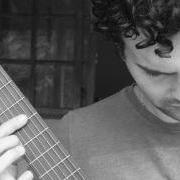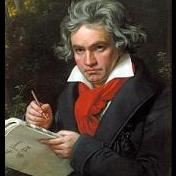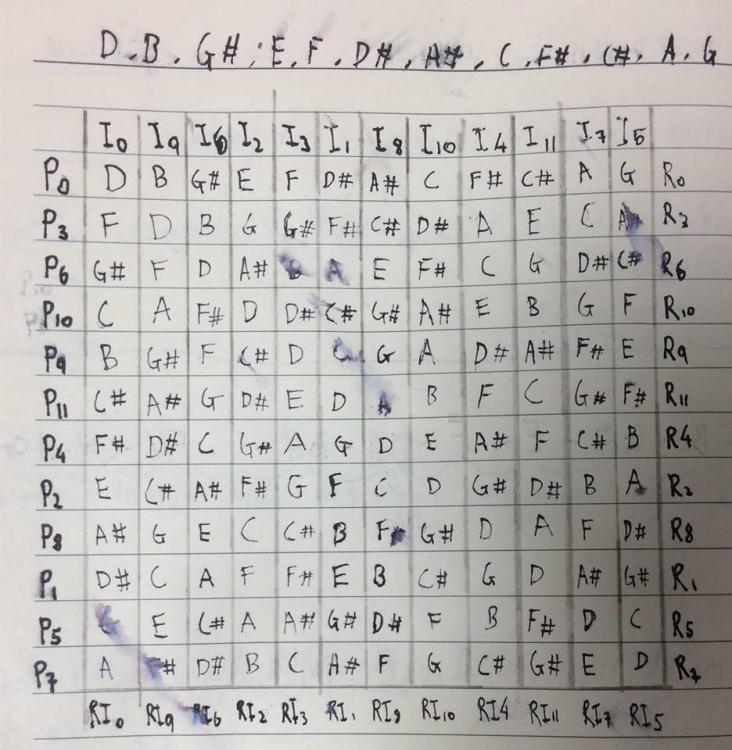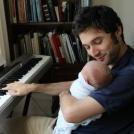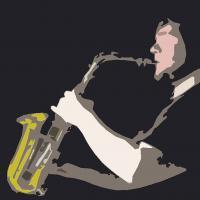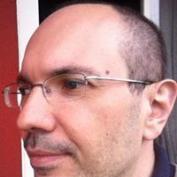Search the Community
Showing results for tags 'flute'.
-
This is a piece I wrote last week. I have separated the ‘movements’ by one measure long rests, and I understand if that may seem a bit too long; I have made them shorter in my more recent pieces. The reason I named it “Try, Try Again” was because the second and fourth movements reminded me of someone making a mistake whereas the other movements sounded like someone achieving or succeeding. I also included a quote on the last page of the score that I felt went along with the title of the piece.
-
The second movement of my piano concerto, I wrote it during the lockdown and I feel like it exemplifies my mood throughout. I'm particularly pleased with the brief piu mosso section. I wanted to upload it with note performer, although I currently don't have my finances in order. so I didn't, if I get it soon I'll re-upload it. Please let me know your thoughts, and I'm working on the final movement, as I'm not short on time.!
-
I recently finished this composition and am looking for more advice. Considering this is my third piece where I’ve written for Strings, i think I’m getting better with writing for them. I can’t think of a name for it though so please recommend any possible names or ideas for names!
- 4 replies
-
- composition
- flute
-
(and 5 more)
Tagged with:
-
Are there any Finale users who know how to add an instrument? I need to write a piece for an Alto Flute but when I go into Document Setup Wizard they don’t have it; only regular flute. Is there a way to add instruments? Btw I use Finale Notepad 2012
-
Hey, I’m new to this website but I figured it’d be a good idea to get advice from other composers since I’m almost entirely self taught with composing and I could always use advice. Anyway here’s one of my pieces. I use Finale and some of the dynamics may seem too quiet or loud for an actual player but I most likely wrote it like that for making it sound the most ‘realistic’ when Finale played it back.
-
I wrote this piece for the project of flutist Robin Meiksins, Where she play one piece a day for a year. I hope you enjoy it!!
-
My hand at a relatively short miniature form created by another member on this forum @luderart I'll be adding some more here as I develop more confidence in writing these type of pieces. So far, this was an enjoyable exercise in brevity. Love it.
-
I started this quintet with the intention of entering this into a competition -so, I've been working pretty intently on it (to the point that it's all I think about). Here are the first 2 movements: 1. Andante: The first movement serves as a sort of introductory movement. The movement utilizes the short two bar theme presented in the opening (this theme also permeates large portions of the work as a whole). The theme is presented in all voices, leading to the establishment of a 'hopefully' hypnotic pattern -through which I play with the theme and introduce contrapuntal material. The structure is ABA'. 2. Allegro Con Fuoco: This is the movement so far that I've spent the most time on -and this is revision number 4. The opening two bars introduce an ostinato pattern that is taken up by ALL instruments within the quintet. This movement is meant to be faster than what I have set. I've slowed it down to give more attention to detail. 3. Adagio Semplice: To compliment the 2nd movement -and in stark contrast texturally- this movement is more of a mediation and prayer-like movement. The movement is slow and contemplative. At any rate, I'll post the final 2 movements once I've finished them. Hope you all enjoy these experiments.
-
Composed some years ago, written in both contemporary and jazz styles. Hope you enjoy. https://www.youtube.com/watch?v=QV76RLRVce4
-
There's so much to be said -with sometimes not enough time to say it. The same is true of music. So many ideas, and yet... we're left with so much longing after each piece. This is the idea behind this work. The ideas are pretty basic. There's some dabbling in serialism, free atonalism, combining tonal systems with serial rows, and a little more. NOTE: The scores aren't that well done. I'm using Flat (a free notation software) since I can't install Finale or Sibelius to my chrome book -and I am moving the pieces from paper to there. I'll be updating the scores once my new laptop arrives and I can get Sib installed again. Until then, I've done my best in adapting to Flat. It's not a bad notation software (though the midi sucks). My apologies! Hope you enjoy!
- 5 replies
-
- modern
- violoncello
-
(and 4 more)
Tagged with:
-
This is my first composition I wanted to put on here, and my first one I will count (All the others were either practice, arrangements, or incomplete and I wasn't comfortable counting them). So I guess this my Op. 1! It is for Flute, Clarinet in Bb, and Trumpet in Bb. It is very short, but I feel it's pretty okay for me atleast. I tried to make the trumpet stand out so I put the trumpet melody in Bb first, then Eb, then in G twice. For the final trumpet melody, I made the Clarinet and Flute switch from F to G major for a nice ending.
-
I'm not finished writing this sonata yet, but I have finished the exposition of the first movement. As you can probably tell by its nickname, the inspiration to write this sonata was Franz Joseph Haydn. This is my first sonata for a duet that actually has a finished exposition. I finished the exposition of the sonata in an hour. I know Haydn is humorous, so I tried to be humorous with my sonata. There are a quite a few surprises in the exposition that I wrote. Here they are: Bar 5: Sudden entry of the flute and absence of the piano Bar 6: Sudden reentry of the piano Bar 10: Short diminuendo, like the theme isn't quite done yet Bar 11: Short staccato variant of the theme over a syncopated bass Bar 14: Sudden forte cadence, theme is now finished Bar 15: Piano dynamic in transition material right after a cadence at forte, sudden absence of the flute Bar 21: Forte dynamic when transition material is taken up an octave, flute comes back Bar 26: Piano dynamic yet again, descending trill motive Bar 41: Very busy texture as the repeat comes closer Bar 47: Sudden change in texture, sudden dynamic change as it repeats I'm wondering, is my sonata exposition Haydnesque in its nature? I tried to get a Haydnesque feel to it by being more humorous than serious with the music. Anything impossible for the flutist? Does it feel like a Molto Allegro to you(tempo is at quarter note = 140 BPM)? Or should I just take the Molto off and just have Allegro as my tempo marking? The audio ends at about 2:51 in the MP3. I am working on the development section right now. Flute Sonata in Eb.mp3 Flute Sonata in Eb.pdf
-
**Re-uploaded due to file attaching issues** A piece written for a composition assignment. This piece is 12 tone and I have attached the tone row matrix I was working from. This is how I submitted it but I have a few issues with the tempi in certain parts as well as the general form. All feedback welcome ☺️
- 1 reply
-
- flute
- cor anglais
- (and 4 more)
-
ARRHYTHMIA (2018) for Piano, Flute and Electronic Hi everyone, click link above and after you see the video, give me feedback. Thank you!
-
4) The Magic Songs.mp3 Magic Songs.pdf This post is about the fourth movement of my piece called “Quiquern”. To read about the first few movements and about this piece in general, go here. Fragment 4: The Magic Songs Famished and delirious, Young Kotuko and the girl set out alone into the blizzard to find food for the starving village. As the dark and the cold and hunger devour them, the two children rave and hallucinate, unhinging themselves from the realm of men and into the realm of gods. As they descend, they sing songs of magic, songs buried deep in their memories, in their blood. Their voices rise and fall with the frozen wind. And through this silence and through this waste, where the sudden lights flapped and went out again, the sleigh and the two that pulled it crawled like things in a nightmare — a nightmare of the end of the world at the end of the world. The girl was always very silent, but Kotuko muttered to himself and broke out into songs he had learned in the Singing–House — summer songs, and reindeer and salmon songs — all horribly out of place at that season. He would declare that he heard the tornaq growling to him, and would run wildly up a hummock, tossing his arms and speaking in loud, threatening tones. To tell the truth, Kotuko was very nearly crazy for the time being; but the girl was sure that he was being guided by his guardian spirit, and that everything would come right. She was not surprised, therefore, when at the end of the fourth march Kotuko, whose eyes were burning like fire-balls in his head, told her that his tornaq was following them across the snow in the shape of a two-headed dog. The girl looked where Kotuko pointed, and something seemed to slip into a ravine. It was certainly not human, but everybody knew that the tornait preferred to appear in the shape of bear and seal, and such like. It might have been the Ten-legged White Spirit–Bear himself, or it might have been anything, for Kotuko and the girl were so starved that their eyes were untrustworthy. They had trapped nothing, and seen no trace of game since they had left the village; their food would not hold out for another week, and there was a gale coming. A Polar storm can blow for ten days without a break, and all that while it is certain death to be abroad. Kotuko laid up a snow-house large enough to take in the hand-sleigh (never be separated from your meat), and while he was shaping the last irregular block of ice that makes the key-stone of the roof, he saw a Thing looking at him from a little cliff of ice half a mile away. The air was hazy, and the Thing seemed to be forty feet long and ten feet high, with twenty feet of tail and a shape that quivered all along the outlines. The girl saw it too, but instead of crying aloud with terror, said quietly, “That is Quiquern. What comes after?”
-
Guten Tag! This is one of the projects I have been working on this semester! Feel free to check out the concept behind it at this blog post: Composition Notebook: "Morning Birds" - the story. What I am attaching for ya'll is the full score (which includes the cues for the three different flute parts, but not the actual parts), one of the flute parts (so you can see what they look like), a MIDI rendering of all the orchestra and flute parts combined, and a MIDI rendering of just the orchestra part (Titled "Three Violin Version..."). One of the flaws of the combined MIDI file is that the flute parts are made up of several short fragments/'bird calls',as you will see in the attached flute part, and the players will be improvising which bird call they play when. In other words, it will be a much more organic process than a computer just playing them all in order, as happens in the recording. I think the MP3 of everything combined sounds pretty terrible and clamorous which is not at all the intent of the piece. I suspect that this chaos will be lessened considerably when real players are performing this. If anyone has experience writing this sort of thing, I would really appreciate any advice you'd have to offer. Also, I am happy to hear comments from anyone about this piece, whether they be about the orchestral writing, the special effects, or anything else. Thank you and enjoy!
- 3 replies
-
- chamber music
- orchestra
- (and 11 more)
-
My master's degree is starting to draw to a close, and I'm very aware that every piece I write now will be one of the last while I still have my tutor. For that reason, I've really tried to push myself beyond my current boundaries wherever possible. This piece, while not incredibly 'contemporary' sounding I suppose, in some ways represents the culmination of my efforts and explorations while at this institution. I've pushed my harmonies and chord progressions as far as I'm personally willing to right now, and also used some new string techniques that I'd not really explored before. Some of this piece, especially the second half, is definitely among my favourite music I've ever written. I've still kept to my usual style of working with very short bits of material and seeing where I can take them, but this piece is roughly divided into three or four smaller sections which have their own separate ideas as well. I've also become very interested lately in sounds that 'morph' over the course of a single note. Usually, that just means fading multiple instruments in and out on the same note. I feel that this is an area that isn't adequately explored in a lot of the more widely played contemporary repertoire, especially in more amateur-aimed music. This piece will be performed at the start of May by a professional ensemble (including a very skilled concert pianist, fortunately). It'll be conducted, which is why I put the piece in this section. I've put it on Soundcloud as well if that playback is working better than this site for whatever reason. There's a couple of really minor changes between the score and the recording, because once you start polishing the score in Sibelius you often kind of ruin the playback.
-
Hello all, I am looking for a flute player to play this passage. It is a cadenza section in a piece I'm writing. I would love to have a recording of what it sounds like with no dynamic or tempo contrast with the quarter note set to about 80bpm and then another recording giving more dynamic and tempo contrast. Ideally I would love as many recordings as possible showing different versions with dynamic and tempo contrast because I'm a low brass guy and I do not have much experience with flute. Cheers, Jacob
-
This is an original composition by me Christian "Cj" Rhen featuring flute, clarinet, trumpet, violin, cello, and piano. This will be performed at various events and professionally recorded by me for competitions and college apps. Tell me what you think. Instagram is @wind_player1
-
My composition for flute and piano. Roberto Zini - Gradita Sorpresa I hope it can be interesting.
-
On the far side of the village is the Quaggi – The Singing House. Only men may enter; it is where they go to pray. In times of plenty, the men sing hearty songs of gratitude to the various gods of the Arctic. In times of desperation, they fall into a trance of smoke and dark and sweat and hunger. Arms linked, stomping the holy ground, repeating of the same syllables, the great hunters of the village reach for the gods with outstretched arms. What does a 10 year old boy imagine of this place? Banned from entering, just like the women, but knowing in his heart, unlike the women, that one day he will be granted entry into the inner sanctum, a young boy of the village can only guess what goes on inside that large tent. He hears from a friend that the sorcerer sings his magic songs and calls upon the Spirit of the Reindeer, and his songs make the wind blow and the ice crack to reveal the seal below. Anxiety and yearning and fear wiggle through his body. One day he would take his place in the Quaggi and learn the secrets of the hunters. But at fourteen an Inuit feels himself a man, and Kotuko was tired of making snares for wild-fowl and kit-foxes, and most tired of all of helping the women to chew seal-and deer-skins (that supples them as nothing else can) the long day through, while the men were out hunting. He wanted to go into the quaggi, the Singing–House, when the hunters gathered there for their mysteries, and the angekok, the sorcerer, frightened them into the most delightful fits after the lamps were put out, and you could hear the Spirit of the Reindeer stamping on the roof; and when a spear was thrust out into the open black night it came back covered with hot blood. For more on this piece, please visit: https://www.senigaglia.com/tag/quiquern/
-
I use an electronic loop as an element to provide atmosphere although it's more chamber work than electronica. I've cranked up the piano click intentionally. If you are scratching your head after hearing this, 'that's different', or 'hmm', then I have succeeded.
-
The dogs’ meat was taken for human use, and Amoraq fed the team with pieces of old summer skin-tents raked out from under the sleeping-bench, and they howled and howled again, and waked to howl hungrily. One could tell by the soap-stone lamps in the huts that famine was near. In good seasons, when blubber was plentiful, the light in the boat-shaped lamps would be two feet high—cheerful, oily, and yellow. Now it was a bare six inches Amoraq carefully pricked down the moss wick, when an unwatched flame brightened for a moment, and the eyes of all the family followed her hand. The horror of famine up there in the great cold is not so much dying, as dying in the dark. All the Inuit dread the dark that presses on them without a break for six months in each year; and when the lamps are low in the houses the minds of people begin to be shaken and confused. But worse was to come. The underfed dogs snapped and growled in the passages, glaring at the cold stars, and snuffing into the bitter wind, night after night. When they stopped howling the silence fell down again as solid and heavy as a snowdrift against a door, and men could hear the beating of their blood in the thin passages of the ear, and the thumping of their own hearts, that sounded as loud as the noise of sorcerers’ drums beaten across the snow. One night Kotuko the dog, who had been unusually sullen in harness, leaped up and pushed his head against Kotuko the boy’s knee. Kotuko patted him, but the dog still pushed blindly forward, fawning. Then Kadlu waked, and gripped the heavy wolf-like head, and stared into the glassy eyes. The dog whimpered and shivered between Kadlu’s knees. The hair rose about his neck, and he growled as though a stranger were at the door; then he barked joyously; and rolled on the ground, and bit at Kotuko’s boot like a puppy. ‘What is it?’ said Kotuko; for he was beginning to be afraid. ‘The sickness,’ Kadlu answered. ‘It is the dog sickness.’ Kotuko the dog lifted his nose and howled and howled again. To learn more about this music, please visit: https://www.senigaglia.com/quiquern-dog-sickness/



